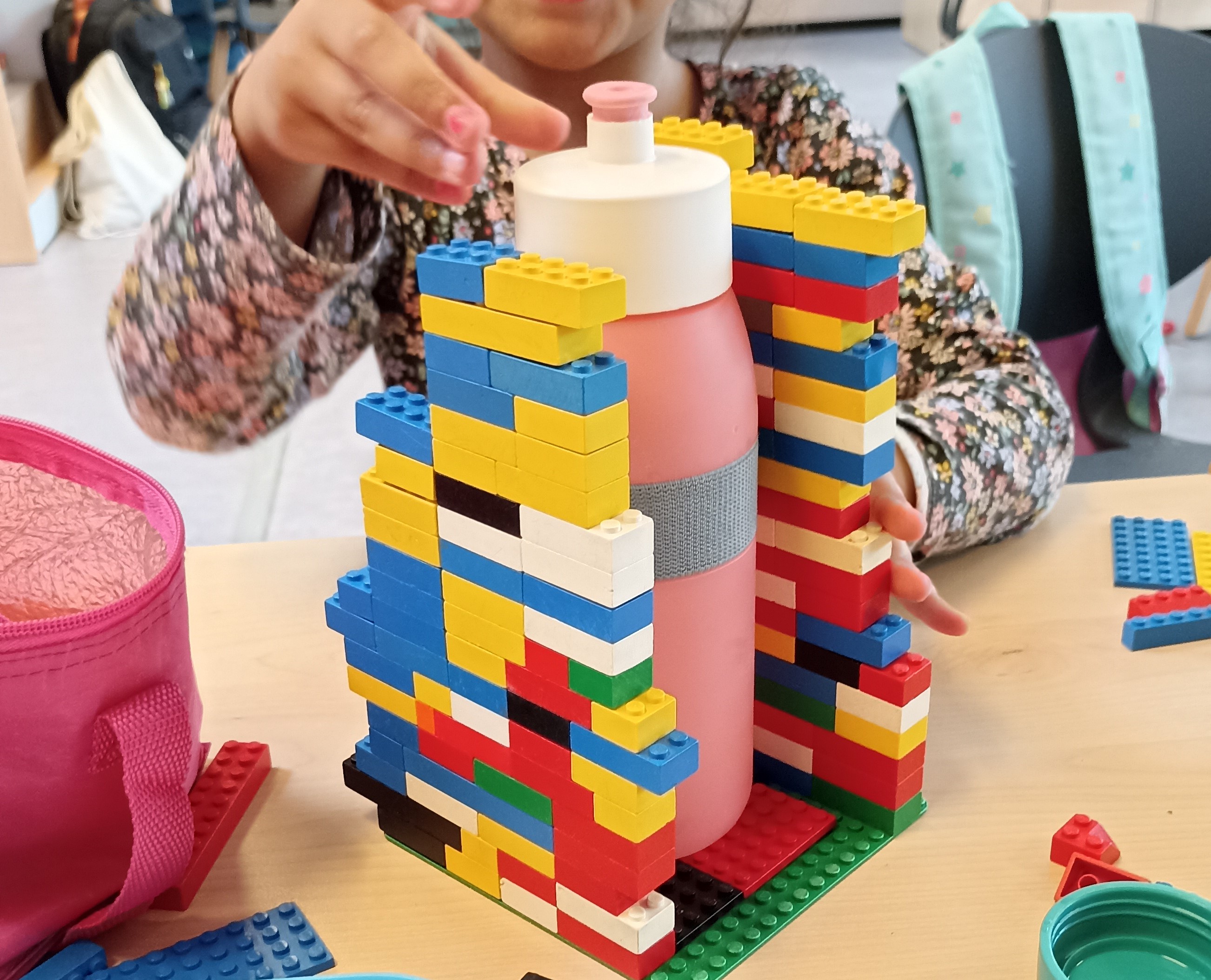Falling cups
Sometimes a cup falls over while we are having lunch. How can we ensure that this does not happen again? Preschoolers will work on that question during this design project..
The assignment
It is nice to introduce this assignment while eating and drinking, so it immediately becomes realistic. Start by describing the problem and challenging students to think about what could be causing the problem. Why does a cup sometimes fall over? Maybe someone will bump into it? Is a chair pushing against it? Or perhaps by a strong gust of wind?
Students can then make prototypes for their own cup. Let them choose from different materials, for example cardboard and masking tape, LEGO or K'NEX.
The prototypes can then be tested, for example by putting some water in them and seeing whether they remain standing when someone pushes them. All prototypes can also be listed for comparison. For example, which one is easiest to take with you? Which is the most lightweight? Which is the strongest?
Spatial ability
During this assignment, the preschoolers work on their spatial skills. Some children may build a wall in front of their cup so it doesn't fall over. Do they also realize that a cup can fall in any direction and that a wall is not enough? Other children might make a lid for their cup. How do you make a lid that is the same size as the cup?
These design assignments were created by Leonie Sonneveld during her graduation project. She investigated how play preferences of preschoolers influence the interaction with a design assignment. The focus of the design assignments was developing spatial skills. The overview of different playing preferences and a booklet and worksheet with which teachers can develop design assignments themselves, can be found here.
Many thanks to teacher Romy and her preschoolers from 'Kindcentrum de Buskes' in Rotterdam.
